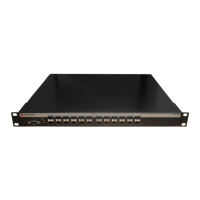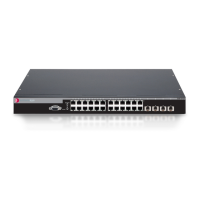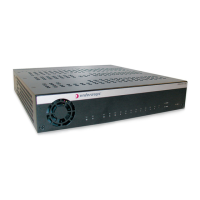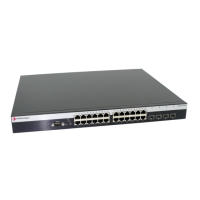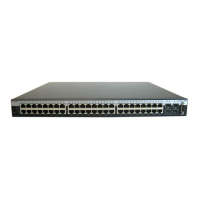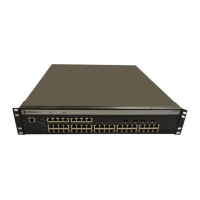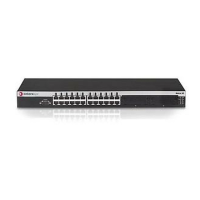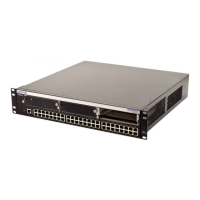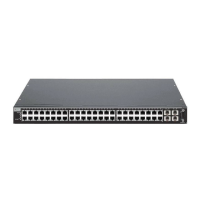show ipv6 traffic
Enterasys C3 Configuration Guide 29-31
Received Datagrams Discarded Due
To Invalid Address
Number of input datagrams discarded because the IPv6 address
in their IPv6 header's destination field was not a valid address to
be received at this entity. This count includes invalid addresses
(for example, ::0) and unsupported addresses (for example,
addresses with unallocated prefixes). For entities which are not
IPv6 routers and therefore do not forward datagrams, this counter
includes datagrams discarded because the destination address
was not a local address.
Received Datagrams Discarded Due
To Truncated Data
Number of input datagrams discarded because datagram frame
didn't carry enough data.
Received Datagrams Discarded Other Number of input IPv6 datagrams for which no problems were
encountered to prevent their continue processing, but which were
discarded (e.g., for lack of buffer space). Note that this counter
does not include datagrams discarded while awaiting re-assembly.
Received Datagrams Reassembly
Required
Number of IPv6 fragments received which needed to be
reassembled at this interface. Note that this counter increments at
the interface to which these fragments were addressed, which
might not be necessarily the input interface for some of the
fragments.
Datagrams Successfully Reassembled Number of IPv6 datagrams successfully reassembled. Note that
this counter increments at the interface to which these datagrams
were addressed, which might not be necessarily the input
interface for some of the fragments.
Datagrams Failed To Reassemble Number of failures detected by the IPv6 reassembly algorithm (for
whatever reason: timed out, errors, etc.). Note that this is not
necessarily a count of discarded IPv6 fragments since some
algorithms (notably the algorithm in by combining them as they are
received. This counter increments at the interface to which these
fragments were addressed, which might not be necessarily the
input interface for some of the fragments.
Datagrams Forwarded Number of output datagrams which this entity received and
forwarded to their final destinations. In entities which do not act as
IPv6 routers, this counter will include only those packets which
were Source-Routed via this entity, and the Source-Route
processing was successful. Note that for a successfully forwarded
datagram the counter of the outgoing interface increments.
Datagrams Locally Transmitted Total number of IPv6 datagrams which local IPv6 user protocols
(including ICMP) supplied to IPv6 in requests for transmission.
Note that this counter does not include any datagrams counted in
ipv6IfStatsOutForwDatagrams.
Datagrams Transmit Failed Number of output IPv6 datagrams for which no problem was
encountered to prevent their transmission to their destination, but
which were discarded (e.g., for lack of buffer space). Note that this
counter would include datagrams counted in
ipv6IfStatsOutForwDatagrams if any such packets met this
(discretionary) discard criterion.
Datagrams Successfully Fragmented Number of IPv6 datagrams that have been successfully
fragmented at this output interface.
Datagrams Failed To Fragment Number of IPv6 datagrams that have been discarded because
they needed to be fragmented at this output interface but could not
be.
Table 29-5 show ipv6 traffic Output Details (Continued)
Output Field What It Displays...
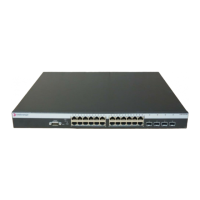
